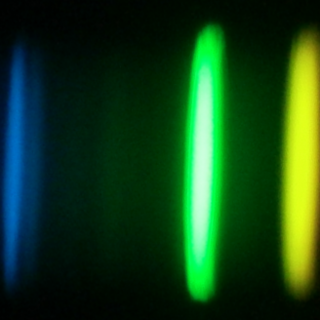Bibcode
Jönsson, Henrik; Holtzman, Jon A.; Allende Prieto, Carlos; Cunha, Katia; García-Hernández, D. A.; Hasselquist, Sten; Masseron, Thomas; Osorio, Yeisson; Shetrone, Matthew; Smith, Verne; Stringfellow, Guy S.; Bizyaev, Dmitry; Edvardsson, Bengt; Majewski, Steven R.; Mészáros, Szabolcs; Souto, Diogo; Zamora, Olga; Beaton, Rachael L.; Bovy, Jo; Donor, John; Pinsonneault, Marc H.; Poovelil, Vijith Jacob; Sobeck, Jennifer
Referencia bibliográfica
The Astronomical Journal
Fecha de publicación:
9
2020
Número de citas
467
Número de citas referidas
431
Descripción
The spectral analysis and data products in Data Release 16 (DR16; 2019 December) from the high-resolution near-infrared Apache Point Observatory Galactic Evolution Experiment (APOGEE)-2/Sloan Digital Sky Survey (SDSS)-IV survey are described. Compared to the previous APOGEE data release (DR14; 2017 July), APOGEE DR16 includes about 200,000 new stellar spectra, of which 100,000 are from a new southern APOGEE instrument mounted on the 2.5 m du Pont telescope at Las Campanas Observatory in Chile. DR16 includes all data taken up to 2018 August, including data released in previous data releases. All of the data have been re-reduced and re-analyzed using the latest pipelines, resulting in a total of 473,307 spectra of 437,445 stars. Changes to the analysis methods for this release include, but are not limited to, the use of MARCS model atmospheres for calculation of the entire main grid of synthetic spectra used in the analysis, a new method for filling "holes" in the grids due to unconverged model atmospheres, and a new scheme for continuum normalization. Abundances of the neutron-capture element Ce are included for the first time. A new scheme for estimating uncertainties of the derived quantities using stars with multiple observations has been applied, and calibrated values of surface gravities for dwarf stars are now supplied. Compared to DR14, the radial velocities derived for this release more closely match those in the Gaia DR2 database, and a clear improvement in the spectral analysis of the coolest giants can be seen. The reduced spectra as well as the result of the analysis can be downloaded using links provided on the SDSS DR16 web page.
Proyectos relacionados

Nucleosíntesis y procesos moleculares en los últimos estados de la evolución estelar
Las estrellas de masa baja e intermedia (M < 8 masas solares, Ms) representan la mayoría de estrellas en el Cosmos y terminan sus vidas en la Rama Asintótica de las Gigantes (AGB) - justo antes de formar Nebulosas Planetarias (NPs) - cuando experimentan procesos nucleosintéticos y moleculares complejos. Las estrellas AGB son importantes
Domingo Aníbal
García Hernández

Abundancias Químicas en Estrellas
La espectroscopía de estrellas nos permite determinar las propiedades y composiciones químicas de las mismas. A partir de esta información para estrellas de diferente edad en la Vía Láctea es posible reconstruir la evolución química de la Galaxia, así como el origen de los elementos más pesados que el boro, forjados principalmente en los interiores
Carlos
Allende Prieto